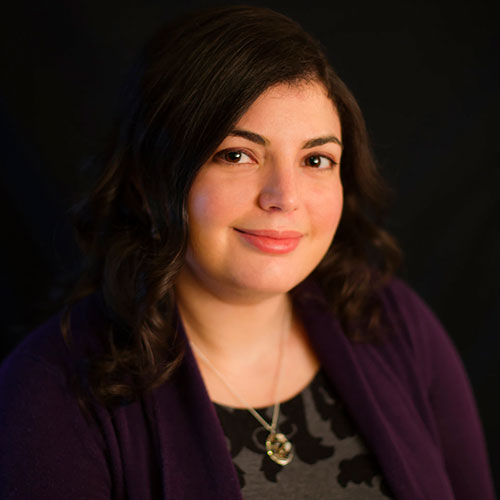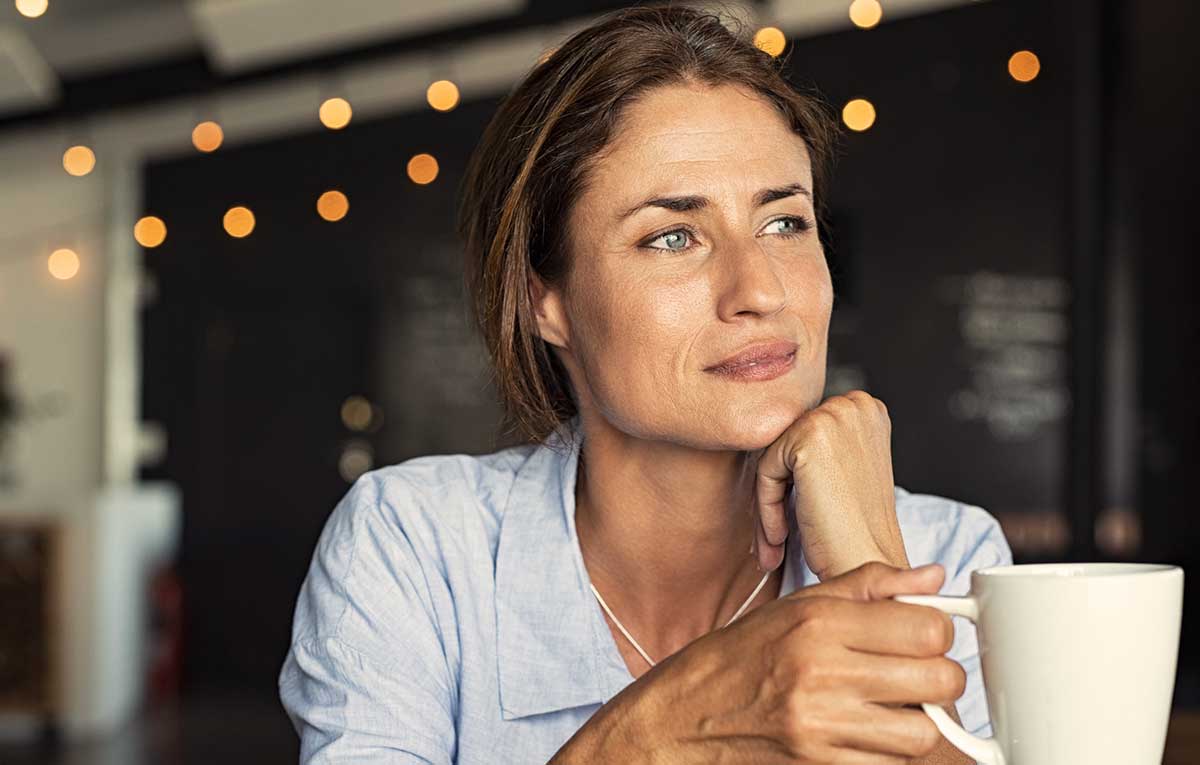The Importance of Visibility: Recognizing Bisexuality in the LGBTQIA Community
Andi (pseudonyms are used for client privacy), a bisexual-identified female, entered therapy in her early 40s. Throughout Andi’s 30s, she was in a 10-year relationship with a woman named Judy. Andi and Judy owned a house together, and were members of several lesbian-oriented activity groups (softball, book club, etc.). Andi and Judy’s social circle was comprised almost entirely of lesbian-identified women. When the two broke up, Andi found herself feeling adrift, but found comfort in her continued friendships with many of the women from her lesbian community. However, when Andi started dating a man about a year later, she found herself suddenly abandoned by her social circle.
In therapy, Andi recounted several occasions on which her “friends” made disparaging remarks about how she had “switched teams” and “gone straight.” She noticed that social invitations were fewer and farther between, and that when she was invited to events, she was pointedly asked if he would be joining her. She began to feel very depressed and anxious. She became withdrawn, and it negatively affected her romantic relationship, her social life, and her self-esteem.
Unfortunately, Andi’s experience with rejection from her lesbian community is not unique. Many bisexual individuals have experienced similar rejections based on their sexuality—often finding themselves accused of being confused, undecided, unfaithful, and even greedy. Many view sexual orientation as a dichotomous experience; a person is either heterosexual (straight) or homosexual (gay/lesbian), and any experimentation done with other sexualities is simply a period of transition between the two. However, many people feel overly restricted by these terms, and oppressed by the idea that their attractions must be exclusively oriented towards a single gender. These people often (but not always) use the term “bisexual” to define their sexuality.
The word bisexual first appeared in an English dictionary in 1892, defined as, “An attraction to both sexes”. Despite being a recognized term for over 100 years, those who identify as bisexual still face rejection and stigmatization. Bisexuals are regularly pressed to “pick a side,” and often, bisexual identity is simply erased because society tends to assume the sexual orientation of others based upon the partners with whom they are seen (i.e. someone is assumed straight when with an opposite-sex partner, and gay/lesbian when with a same-sex partner).
Bisexual-identified actor Anna Paquin recently clarified this issue to Larry King, when he assumed her bisexuality to be past tense now that she is monogamous and married to a man. In response, Paquin posited, “I don’t think it’s a past tense thing…Are you still straight if you are with somebody?…If you were to break up with them or if they were to die, it doesn’t prevent your sexuality from existing. It doesn’t really work like that.” In American culture, it is commonplace for heterosexual individuals to publicly discuss attraction to opposite-sex celebrities, regardless of their own relationship status. The practice is one of the very foundations of reality television, popular culture magazines, and advertising. It would be a mistake to assume that a bisexual-identified person’s attractions “shut off” when they are in a relationship; they are not “gay now” or “straight now” based upon the gender of their partner. They were, and remain, bisexual as long as they claim the title.
Studies have shown that both heterosexual and homosexual communities ostracize bisexuals, often citing stereotypes such as bisexuality being a phase, bisexuals being inherently promiscuous and unfaithful, and bisexuals (especially bisexual men) being largely responsible for the spread of HIV. Because of these stigmas, bisexuals often experience mental health concerns.
Many bisexual individuals seek support within the gay and lesbian community, only to be turned away based on distrust and stereotypes. Increased media representation is one way to help improve the public’s understanding of this section of our population. One bisexual-identified woman,” T.J.” lamented,” I have found I am very welcome in the LGBTQIA community when currently in or seeking same-sex companionship. Once I start seeking/dating opposite sex partners, I am no longer welcome. They ignore my ‘bi-ness’ to the point of referring to me as a lesbian when they know i am attracted to both genders. Even partners have been this way. I am accepted in the queer community only when I am expressing my queerness—I am seen as an ally when I’m in a ‘straight’ relationship.”
Bisexuality has a history of poor representation on television, but it has improved somewhat in mainstream media – both in frequency and positivity. In 2014, “Bisexual women [made] up 20% of LGBTQIA characters on cable and bisexual men [made] up 10% (compared to 15% and 6% respectively [in 2013]).” Of course, LGBT representation in general, while on the rise, still has a long way to go before it accurately reflects the percentage and variability of LGBT individuals in our society, but the progress is undeniable. Current major network shows with prominent bisexual characters include Grey’s Anatomy (ABC), Bones (Fox), Glee (Fox), and Arrow (CW). Netflix has also brought some powerful visibility to bisexual characters with breakout hit Orange is the New Black, and produced the most politically powerful bisexual in the (fictional) world: House of Cards’ Frank Underwood.
From a clinical standpoint, bisexual clients may come to therapy feeling alone, angry, depressed, or displaced from any sense of community. Clinicians must be prepared with a working knowledge of the challenges presented to the bisexual community in order to offer competent support, just as they would be for any other racially, ethnically, or religiously diverse clients they choose to serve. Preparation for competently working with bisexual clients includes clinicians examining their own sentiments, positive, negative, or neutral, about bisexuality, like with any other “-ism” or phobia. It is critical that clinicians recognize that bisexuality is not a symptom or disorder, and that reparative therapy for any sexual orientation is contraindicated according to the American Psychological Association. In early April of 2015, President Obama also spoke out against “conversion” or “reparative” therapies, and encouraged all states to ban such practices outright.
In therapy, clinicians should avoid assuming a client’s sexual orientation—it is up to clients to define themselves, and the therapist’s role is to offer affirmative, informed support. If the client presents with confusion or pain surrounding their sexual orientation, a knowledge of resources, such as books, websites, and support groups (if they exist locally) can greatly benefit both the therapeutic relationship and the client’s progress
Ultimately, it is most important for clinicians and laypersons alike to remember that bisexuality is a legitimate orientation, and that bisexual individuals are just as worthy of respect, opportunities, and quality treatment as anyone else.
The articles and books linked in this piece are a good place to start. Below are some additional resources that may be of value to those looking to support the bisexual community, or simply learn more about it.
Resources
Articles & Websites:
American Institute of Bisexuality
American Psychological Association’s Training Videos on Gender and Sexual Minority Issues.
Bisexual Organizing Project (BOP)
Mike Szymanski’s ongoing articles, Bisexual Examiner
Tuller, D. (2011, Aug. 22). No surprise for bisexual men: Report indicates they exist. New York Times Online.
Wesh, M. (2014). Rust revisited: An update on lesbians’ opinions and the implications for bisexual women.
Books:
Burleson, W. (2005). Bi America: Myths, truths, and struggles of an invisible community. Florence, KY: Routledge.
Eisner, S. (2013). Bi: Notes for a bisexual revolution. Berkeley, CA: Seal Press.
Ochs, R. (2009). Getting bi: Voices of bisexuals around the world (2nd ed). Boston, MA: Bisexual Resource Center.
Rust, P. (1995). Bisexuality and the challenge to lesbian politics: Sex, loyalty, and revolution. New York, NY: NYU Press.
Author’s note: The acronym LGBTQIA stands for lesbian, bisexual, transgender, queer, intersex, & asexual. The term “bisexual” is used in this article due to its mainstream recognition and generally agreed-upon definition. The author by no means intends to further invalidate or erase other non-binary sexual identities, such as “queer,” “pansexual,” “fluid,” or any others. Similarly, the use of “same-sex” and “opposite-sex,” and the lack of discussion of the spectrum of gender identities, is only for the sake of brevity, rather than invalidation.
Resources
Articles & Websites:
American Institute of Bisexuality
American Psychological Association’s Training Videos on Gender and Sexual Minority Issues.
Bisexual Organizing Project (BOP)
Mike Szymanski’s ongoing articles, Bisexual Examiner
Tuller, D. (2011, Aug. 22). No surprise for bisexual men: Report indicates they exist. New York Times Online.
Wesh, M. (2014). Rust revisited: An update on lesbians’ opinions and the implications for bisexual women.
Books:
Burleson, W. (2005). Bi America: Myths, truths, and struggles of an invisible community. Florence, KY: Routledge.
Eisner, S. (2013). Bi: Notes for a bisexual revolution. Berkeley, CA: Seal Press.
Ochs, R. (2009). Getting bi: Voices of bisexuals around the world (2nd ed). Boston, MA: Bisexual Resource Center.
Rust, P. (1995). Bisexuality and the challenge to lesbian politics: Sex, loyalty, and revolution. New York, NY: NYU Press.

